Fiskars Pruning Stik Tree Pruner (5’) – Model #9234: Product Review
We independently evaluate all recommended products and services. If you click on links we provide, we may receive compensation.

How do you prune branches and limbs that are just out of reach that would either require a ladder or a full-fledged extendable pole pruner to get the job done? Or conversely, how would you reach into a shrub and prune it to ground level?
Traditional methods, such as using a ladder, can make for unstable and potentially unsafe pruning (without the proper arborist safety equipment), and extendable pole pruners are sometimes heavy/awkward and have exterior ropes that can get hung-up in tree branches or brushy shrubs.
I tested an intermediary product from Fiskars that reaches pruning area that are somewhere between 7’ and 10’ off the ground, and on or near the ground (so that you don’t have to bend over or kneel to make the cut).
It has a rotating and locking cutting head, is “ropeless,” and should cut through wood up to 1.25-inches in diameter.
About Fixed Length Pruners (Stick-Style)
Short, stick-style pruners typically range in length from 5’- 6’ and are an excellent way to make pruning cuts when you physically can’t reach the pruning site.
Design
Fixed length, short stick pruners usually come in two designs: a fixed shaft with an adjustable cutting head, or a fixed cutting head with blades that can be rotated by spinning the pruning shaft. Fiskars has adopted the first design.
Some variants on design include two handles on a single aluminum tube (one in the center of the tube, and one at the end). And others are a squeeze-handle at the end opposite the cutting head. It comes down to personal choice on whatever works best for the individual and application.
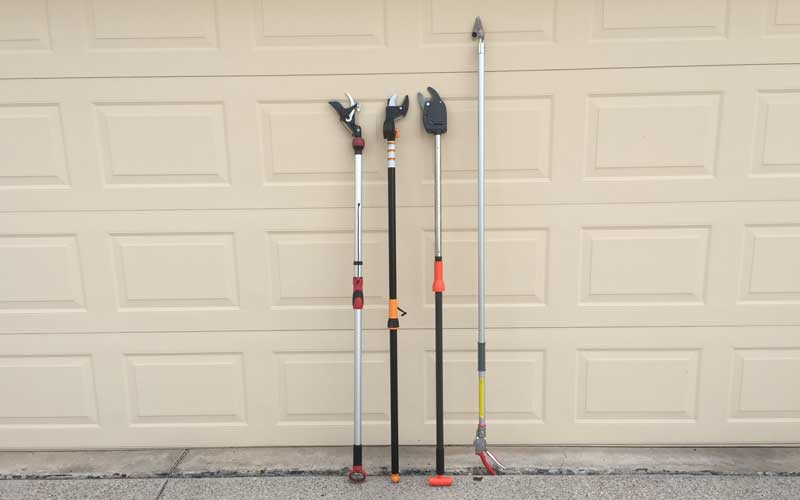
The stick style pruners on the left have an adjustable cutting head, the one on the right requires you to spin the shaft.
Caution
Virtually all stick-style pruners are constructed with an aluminum shaft to reduce the weight. A cautionary note, aluminum is an excellent conductor of electricity, so an aluminum stick pruner should never be used around power lines.
Cutting Head
Cutting heads may have an exposed spring to draw the cutting blade back into the open position once the pruning cut is finished. Other models have these same kinds of spring mechanisms built inside the aluminum shaft, cutting head, or handle at the opposite end of the pruner’s cutting blades.
Most, if not all, have a bypass cutting head, much like the type you see on hand pruners and loppers.
Blade Operation
These types of shorter designs either incorporate a rope, nylon strap (also known as webbing), or a metal shaft to operate the blades. And virtually all the blade activation pulling mechanisms are incorporated inside the aluminum tube to eliminate exterior ropes, webbing or rods from getting stuck in whatever you’re trying to prune.
Recommended Uses
Like all tools, these shorter, fixed length pruners have a specific use. They’re great for pruning above your head (when a ladder is unnecessary), reaching into areas that are hard to get to, eliminating scratches and pokes by thorny plants, and making cuts without kneeling or excessive bending at the knees or waist.

Fiskars Pruning Stik in use
Handles on the Fiskars Pruning Stik
The Fiskars Pruning Stik Tree Pruner (ropeless) has an aluminum shaft that employs a plastic pull handle at the mid-section of the shaft and a plastic ball at the end of the pole (both for activating the cutting blade mechanism).
The handle is a comfortable tubular design that’s flared at the end closest to you. The flare is treated with a rubberized compound that made for an even better grip and stronger pulling power. I found this particularly useful when cutting through really hard wood.
One really nice feature of this handle is that the nylon webbing that acts as the pulling mechanism to activate the blades emanates from the handle area. The design lets you micro-adjust the tension of the nylon webbing.
Most webbing (and rope) materials will stretch over time. This is particularly true if you pull really hard when making pruning cuts. As the webbing stretches, it’s vital to be able to take the slack out of the pulling system. Fiskars’ unique nylon webbing design allows you to do this easily and quickly. And despite the fact that some extra webbing (about 4”) hung from the handle, I found that it never got stuck or tangled on any of the materials I was pruning.

The mid-shaft pull handle and rubberized grip make the pruner easy to hold and is perfectly positioned at the middle of the aluminum shaft for shorter pruning cuts.
Is It Really “Ropeless”?
Fiskars’ packaging highlights the word “ropeless”. Most of the interior pulling mechanism IS ropeless and uses nylon webbing. However, there is rope in the adjustable cutting head. I believe that rope must be used in this area as the nylon webbing would likely kink and cause binding, thereby rendering the cutting head inoperable. That said, the majority of the pulling mechanism is indeed “ropeless” and lives up to its advertising claim.
The blade closing material (a small rope) was neatly incorporated into the cutting head and never came loose, even when I was pruning in some incredibly dense brush.
This was also true of the spring that kept the cutting blade in the open position when not in use. It never loosened or came off even when I jammed it into a shrub to make cuts that would be very difficult with a pair of hand pruners or loppers.
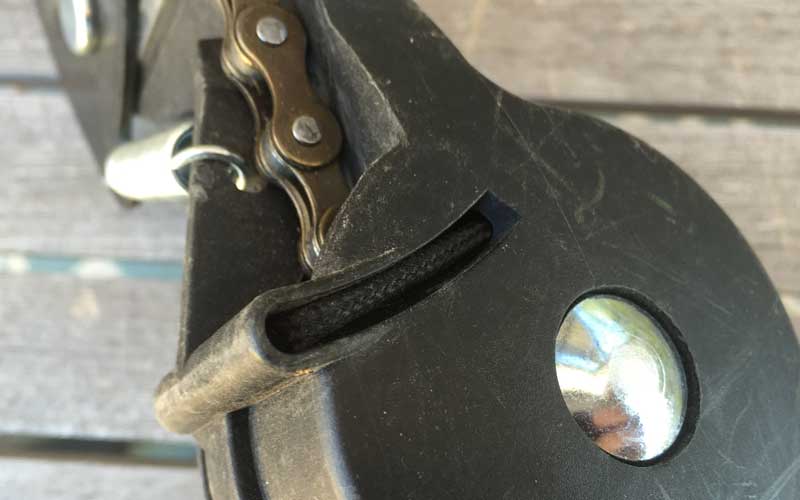
Most of the Pruning Stik incorporates nylon webbing, but the cutting head uses a piece of rope to help eliminate the potential binding of the webbing.
Locking Mechanism
I liked the thumb activated locking mechanism for the cutting head. It’s located right at the point where the cutting head bends. Just loosen it, move the cutting head/blades into the position you want, and tighten the lock.
I really put the tool through some brutal cutting tasks and the head stayed put. I attributed this to the superior locking feature. The orange thumb lock was not only highly visible, but it I could feel the locking mechanism tighten the head into a fixed position. The “feel” of locking the head was distinct, as was the loosening of the lever. In both cases, I knew if the head was locked or not, even without looking at the icons on the head.
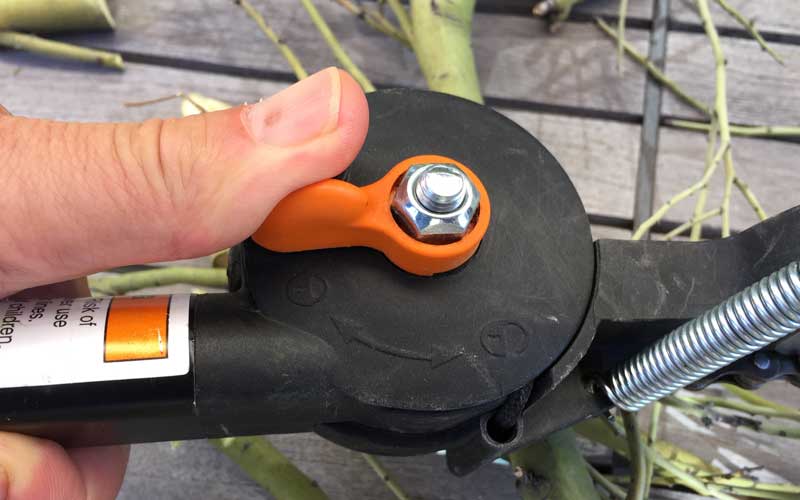
The cutting head locking mechanism was extremely well designed. It never loosened up, even when pruning in the densest of pruning areas.
Making the Cut
The Puning Stik incorporates an “Activating Ball” (Fiskars-speak for a round plastic ball) at the end of the pole opposite the cutting head.
It allows you to hold the pruner at arms length while pulling the ball with one hand, thereby activating the cutting head mechanism. As a result, you can make pruning cuts farther away.
The “Activation Ball” was easy to grasp and had a molded plastic tapered tube that slid into a rectangular plastic fitting in the pole shaft. This kept the ball in place and also kept if from banging around.

An easy-to-grasp ball at the end of the Pruning Stik to make those longer pruning cuts.
Cutting
The Pruning Stik made very nice cuts in live wood, especially in the ½” to 1” range. Although it’s rated to cut wood up to 1 ¼” in diameter, I found that at that diameter the handle or activation ball was hard to pull and cuts tended to be ragged. Then again, this is true with most of the pruners and loppers I’ve tried so far, where the maximum cutting diameter puts adverse stress on the tool and often results in messy cuts.
The Pruning Stik excelled in that middle ground, where a pair of hand pruners would be too small and loppers too big.
In my test, I found that the cleanest pruning cuts were made when the non-cutting blade (also known as the “counter blade”) was on the top of the limb/branch and the cutting blade on the bottom.
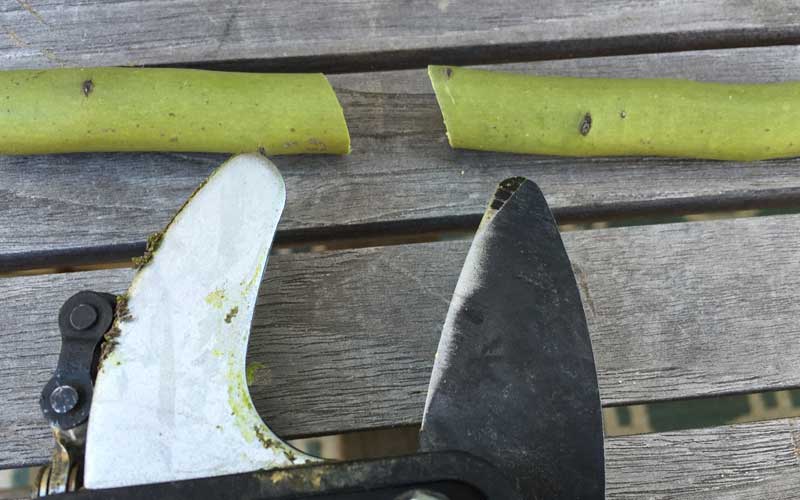
Clean cuts were achieve with materials ranging from ½” to 1”
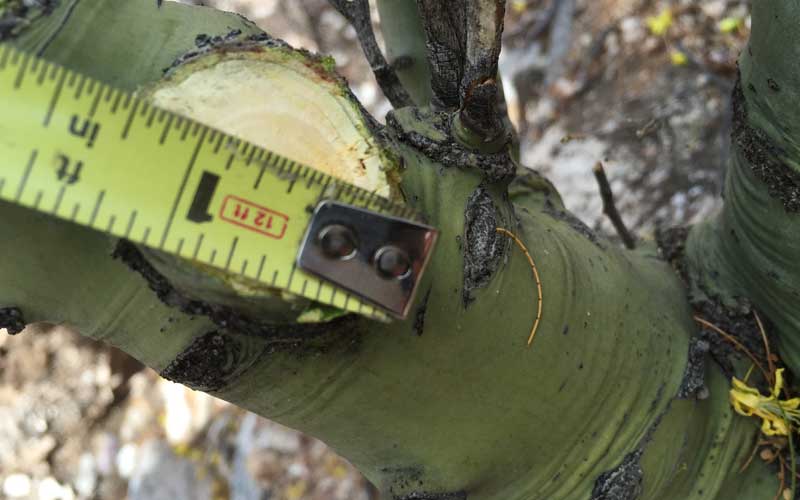
Maximum diameter cuts taxed the pruner and often made ragged cuts. But this is true for most pruners and loppers when they are asked to cut material at the limits of their pruning range.
Blade Spread When Cutting Deadwood
Another thing I discovered about the Pruning Stik is “blade- spread.” It happens primarily when cutting deadwood, especially when cutting on an angle. The piece of the deadwood spreads the blades apart and gets caught between the blades, resulting in the blades getting stuck in the closed position with the two blades held apart by the wood.
Then again, this isn’t an issue specifically related to the Pruning Stik. Bypass pruners and loppers are best used with live wood, rather than deadwood, and we’ve seen this issue with most of the bypass cutting blades we’ve tested here at the Gardening Products Review. The best solution is to use an anvil pruner instead.
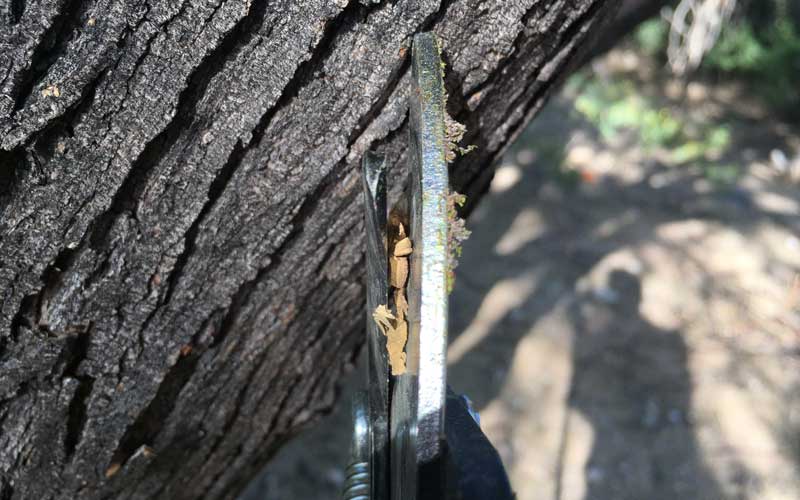
Blade spread while cutting through deadwood. This happens to virtually all types of bypass pruners/loppers at one time.
Rotational Cutting Head
One of the most outstanding design features was the rotational cutting head that folds over in both directions. In one direction it bent 180 degrees and in the other 60 degrees, making for an impressive 240 degrees of head rotation. The locking mechanism keeps the cutting head in whatever position you place it.
This let me angle the head for literally any cutting position I needed. I found that the 60 degree “off-center” provided additional flexibility when pruning shrubs to the ground and kept the cutting blades out of the dirt.
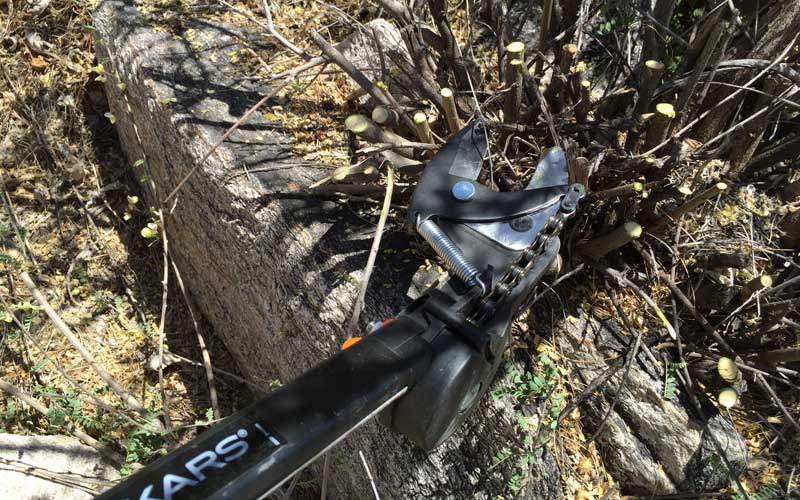
The adjustable head made it easy to cut materials at ground level without bending over, AND kept the cutting blades out of the dirt when cutting brush and shrubs to the ground.
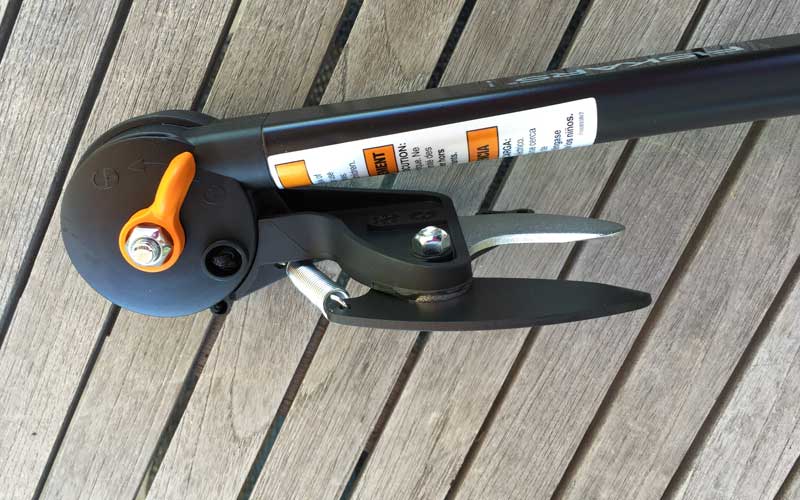
The 180 degree rotational head made for easy transport and storage by keeping the sharp blades tucked against the shaft. Its full range of motion from 0 degrees to 180 degrees made it ideal for adjusting the angle to make proper pruning cuts.
Potential Problem With Older Models
So, lots of good stuff for sure, but here’s where I ran into a problem. After several hours of pruning, I then used the Pruning Stik to cut some shrubs to ground level. When I forced the cutting head into a thickly branched shrub and pulled the “Activation Ball,” nothing happened. Puzzled, I pulled the head out of the shrub only to find that the quick-link (just like a bicycle chain) had been dislodged by the dense brush. Literally, a chain link had fallen out of the “Power-Stroke” (another Fiskars trademarked name) chain drive that is attached to the cutting head. I discovered that the retaining clip that holds the two sections of steel bicycle-style chain together easily slipped off, rendering the pruner inoperable.

Cutting in dense brush, where the old style quick-link chain link met with problems.
When I called Fiskars to explain the problem, they sent me a replacement unit immediately. This replacement unit used a different chain link to secure the Power-Stroke chain to the pruning blade and it worked flawlessly – there’s no way that chain is going to fall apart.
So if you buy a Fiskars Pruning Stik, which chain link will you end up with?
Fiskars confirmed for me that this new linkage system is what’s currently being manufactured. There may still be some of the older models on the shelf at home improvement store or garden centers, but Fiskars confirmed that any old style linkages (using retaining clips) are covered under the Fiskars warrantee and will either be replaced with the new style chain link or the whole Pruning Stik will be replaced (at Fiskars’ discretion).
I have to give Fiskars’ customer service and product development folks a heck of a lot of credit for listening to my feedback and responding so quickly.

The new chain link design is already in production at the manufacturer. I experienced no problems. It worked flawlessly!
Blades and Replacement Parts
I found that the cutting blade was extremely sharp and stayed that way after hundreds of cuts in both live and dead wood. By the time I had finished my testing, the blade was as sharp as when it came out of the original packaging. Hard to believe, but true. Fiskars claims that they employ, “fully hardened, precision-ground steel blades [that] stay sharp, even through heavy use”. I can certainly attest to the fact that they do indeed stay sharp through heavy use.
Having said that, it’s still important to sharpen the blade from time to time to maintain blade sharpness. The duller the blade, the more risk for improper cuts. It also takes more physical strength to pull the handle or “Activation Ball” when blades are dull.
Be aware that if you do sharpen the blades, the blades are no longer covered under the warranty. If you’re unable to or uncertain about sharpening pruner blades, Fiskars offers a replacement blade kit for $12.99 plus shipping. If the cutting head is damaged, they also offer a complete replacement head assembly for $17.99 plus shipping. Both can be found on the Fiskars website.
Low Friction Coating Really Works
Fiskars also claims that the blades are coated with a “low friction” coating that helps prevent the blades from gumming up and sticking together between cuts. I couldn’t evaluate the coating itself but I was impressed as I cut my way through a lot of Brittle Bush. This shrub (native to the Southwest) exudes a really nasty, gummy, sticky sap after each pruning cut (sort of the consistency of wood glue). The Pruning Stik had no problem slicing through this material without binding.
Weight
This cool tool weights less than 2 lbs. I weighed mine to check and it weighed exactly 1 lb. 14 ¾ ounces. I found it very light and easy to work with. Its power to weight ratio was excellent. And when hauling this baby miles into the wilderness to prune hiking trails, weight really matters. I strapped it to my backpack and hardly knew it was there.
Recommendation
![]() I have to admit, this is one of my favorite short stick-style pruners. It’s strong, nimble, lightweight, makes precision cuts and held up to most of the toughest pruning I could put it through. I really liked the locking pruning head; it stayed put and gave me a great deal of flexibility whether pruning above my head or at ground level. The blades stayed factory sharp, the cutting head spring stayed in place, the “Activation Ball” and center of the stick handle were perfectly placed and designed, and the range of motion of the cutting head was awesome. All in all a great tool.
I have to admit, this is one of my favorite short stick-style pruners. It’s strong, nimble, lightweight, makes precision cuts and held up to most of the toughest pruning I could put it through. I really liked the locking pruning head; it stayed put and gave me a great deal of flexibility whether pruning above my head or at ground level. The blades stayed factory sharp, the cutting head spring stayed in place, the “Activation Ball” and center of the stick handle were perfectly placed and designed, and the range of motion of the cutting head was awesome. All in all a great tool.
Where to Buy
The Fiskars Pruning Stik can be purchased online through the Fiskars website, as well as in hardware store such as Home Depot and True Value. The retail price is $49.99 (shipping charges may apply). Or if you prefer, you can find it online on Amazon.
Now over to you – What’s the most effective stick-style pruning tool you’ve tried? Let us know in the comments below!
If you liked this review, please sign up for our monthly newsletter with reviews, special offers and giveaways.
Yes, I want reviews & special offers!
Related Reviews
Disclaimer – GPReview would like to thank Fiskars for giving us a free pruning stick to review. There was no expectation that it would be a positive review and we received no compensation for writing it. All opinions expressed here are those of the author based on personal experience using the product.
Please note that the Amazon links (and only the Amazon links) above are affiliate links. Should you choose to purchase products through these links, GPReview will make a small commission (at no extra cost to you) that helps to support this website and our gardening product reviews. Thank you!
Enjoyed This Review?
If you liked this review, please sign up for our email updates with reviews, how-to articles and gardening videos!

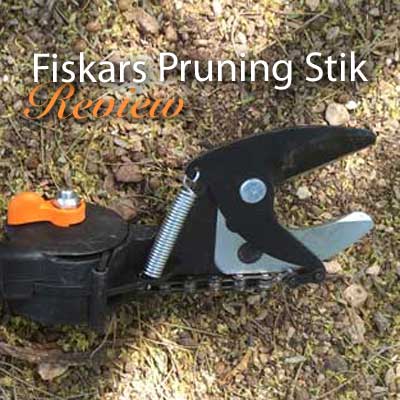
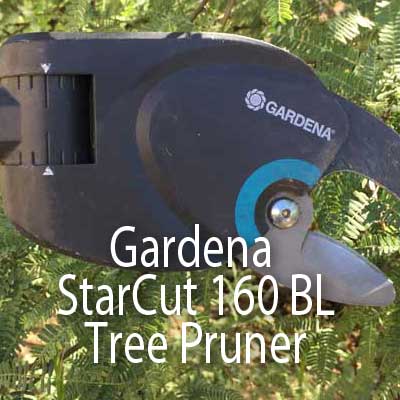

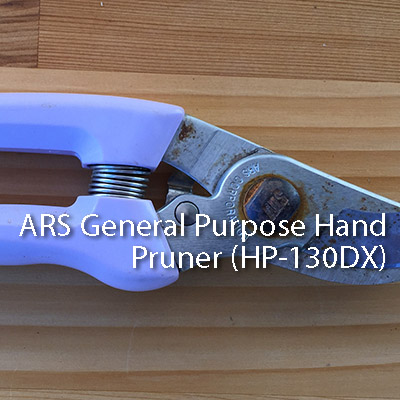

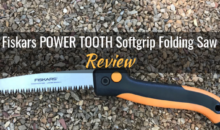

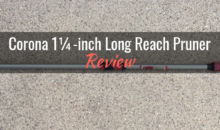
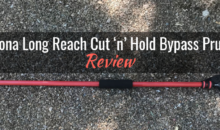
Thank you for your reviews. We are purchasing a tree pruner to cut limbs around a power line. Your review scared me off of an aluminum product. What else is out there for this task and is it really a danger to use around the lines?
We don’t recommend that homeowners work within 10 feet of any power lines. If you need to prune anything closer to a power line of any kind, it’s best to hire a professional arborist with electrical hazard training. If you’ll be doing it yourself (and outside the 10 foot distance), you can find fiberglass poles that have been tested to show that they don’t conduct electricity. Generally, you’ll have to buy the pole separately from the cutting head. You’ll find these kinds of tools at arborist supply outlets (I wouldn’t buy it from a big box store).
What a comprehensive review thanks from a fellow Tucsonan
Glad you liked it!
Hi ,just wanted to know where can i purchase a cutting blade for my fiskars rachet drive , it was a gift ! I lend tool to friend and came back broken ! Well so much for letting him anything anymore .
Hi Sherman,
Try this Fiskars link: http://www2.fiskars.com/Products/Gardening-and-Yard-Care/Gardening-Replacement-Parts/Replacement-Tree-Pruner-Blade. I think it might be what you’re looking for. Let me know how it works out.
Regards,
Jack
looking for info why my blade is locked, nothing working. Thanks
The unit worked very well for many years. Then one day the Strap broke, thinking that it should be easy to fix I found that no replacement Strap was to be found, anywhere. Nobody answered the 866-348-5661, can’t find the replacement strap anyway anyplace which means that I just have to throw the tool away and buy another. But, it says that the tool has a “time-life warranty” which also is not to be found!